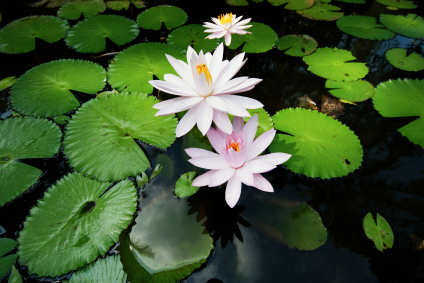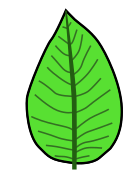Stamp: Fragrant Water Lily (Nymphaea odorata) (Angola 1996)
Fragrant Water Lily (Nymphaea odorata) (Angola 1996)
20 April (Angola ) within release Fauna and Flora goes into circulation Stamp Fragrant Water Lily (Nymphaea odorata) face value 4400 Angolan kwanza
| Stamp Fragrant Water Lily (Nymphaea odorata) in catalogues | |
|---|---|
| Afinsa-Mundifil: | Afi:AO-RP 436 |
| Michel: | Mi:AO 1028 |
| Yvert et Tellier: | Yt:AO 1028 |
Stamp is square format.
Also in the issue Fauna and Flora:
- Souvenir Sheet - Spotted Hyena (Crocuta crocuta) face value 12000;
- Stamp - Verdant Hawkmoth (Euchloron megaera) face value 1500;
- Stamp - Fragrant Water Lily (Nymphaea odorata) face value 4400;
- Stamp - Square-marked Toad (Bufo regularis) face value 5100;
- Stamp - African Wild Dog (Lycaon pictus) face value 6000;
- Stamp - Spotted Hyena (Crocuta crocuta) face value 12,000;
Stamp Fragrant Water Lily (Nymphaea odorata) it reflects the thematic directions:
Aquatic plants are plants that have adapted to living in aquatic environments (saltwater or freshwater). They are also referred to as hydrophytes or macrophytes. These plants require special adaptations for living submerged in water, or at the water's surface. The most common adaptation is aerenchyma, but floating leaves and finely dissected leaves are also common.
The principal factor controlling the distribution of aquatic plants is the depth and duration of flooding. However, other factors may also control their distribution, abundance, and growth form, including nutrients, disturbance from waves, grazing, and salinity.
Aquatic vascular plants have originated on multiple occasions in different plant families; they can be ferns or angiosperms (including both monocots and dicots). Seaweeds are not vascular plants; rather they are multicellular marine algae, and therefore are not typically included among aquatic plants. A few aquatic plants are able to survive in brackish, saline, and salt water. Examples are found in genera such as Thalassia and Zostera. Although most aquatic plants can reproduce by flowering and setting seed, many also have extensive asexual reproduction by means of rhizomes, turions, and fragments in general.
One of the largest aquatic plants in the world is the Amazon water lily; one of the smallest is the minute duckweed. Many small aquatic animals use plants like duckweed for a home, or for protection from predators, but areas with more vegetation are likely to have more predators. Some other familiar examples of aquatic plants might include floating heart, water lily, lotus, and water hyacinth.
Some aquatic plants are used by humans as a food source. Examples include wild rice (Zizania), water caltrop (Trapa natans), Chinese water chestnut (Eleocharis dulcis), Indian lotus (Nelumbo nucifera), water spinach (Ipomoea aquatica), and watercress (Rorippa nasturtium-aquaticum).
A leaf (pl.: leaves) is a principal appendage of the stem of a vascular plant usually borne laterally aboveground and specialized for photosynthesis. Leaves are collectively called foliage, as in "autumn foliage", while the leaves, stem, flower, and fruit collectively form the shoot system. In most leaves, the primary photosynthetic tissue is the palisade mesophyll and is located on the upper side of the blade or lamina of the leaf but in some species, including the mature foliage of Eucalyptus,palisade mesophyll is present on both sides and the leaves are said to be isobilateral. Most leaves are flattened and have distinct upper (adaxial) and lower (abaxial) surfaces that differ in color, hairiness, the number of stomata (pores that intake and output gases), the amount and structure of epicuticular wax and other features. Leaves are mostly green in color due to the presence of a compound called chlorophyll which is essential for photosynthesis as it absorbs light energy from the sun. A leaf with lighter-colored or white patches or edges is called a variegated leaf.


